2009 in paleoathropodology
Arthropods
Anomalocaridids
| Name | Novelty | Status | Authors | Age | Unit | Location | Notes | Images |
|---|---|---|---|---|---|---|---|---|
|
Schinderhannes[1] |
gen et sp nov |
Valid |
Kühl, Briggs, & Rust |
Lower Devonian |
||||
Arachnids
| Name | Novelty | Status | Authors | Age | Unit | Location | Notes | Images |
|---|---|---|---|---|---|---|---|---|
|
gen et sp nov |
Valid |
Selden & Penney |
Ypresian |
Horsefly Lagerstätte, British Columbia |
||||
Insects
| Name | Novelty | Status | Authors | Age | Unit | Location | Notes | Images |
|---|---|---|---|---|---|---|---|---|
|
sp nov |
Valid |
Stewart Valley Group |
only described Neogene snakefly fossil |
|||||
|
gen et sp nov |
Valid |
Makarkin & Archibald |
Ypresian |
Tom Thumb Tuff, Klondike Mountain Formation |
| |||
| Apis (Cascapis) nearctica[5] |
sp nov |
Valid |
Engel, Hinojosa-Diaz, & Rasnitsyn |
Middle Miocene |
|
The first fossil honey bee from the New World. | ||
| Aspidopleura[6] |
gen et sp nov |
Valid |
Gibson |
Eocene |
Baltic amber |
| ||
|
gen et sp nov |
Valid |
Gibson |
Eocene |
Baltic amber |
| |||
|
sp nov |
Valid |
Archibald |
Ypresian |
Tom Thumb Tuff, Klondike Mountain Formation |
||||
|
sp nov |
Valid |
Archibald |
Ypresian |
Kamloops Group, McAbee, British Columbia |
||||
|
sp nov |
Valid |
Archibald |
Ypresian |
Kamloops Group, McAbee, British Columbia |
||||
|
sp nov |
Valid |
Archibald |
Ypresian |
Tom Thumb Tuff, Klondike Mountain Formation |
||||
|
gen et sp nov |
valid |
Chaboo & Engel |
Parachute Member, Green River Formation |
One of the oldest tortoise beetles |
||||
|
gen et sp nov |
valid |
Chaboo & Engel |
Parachute Member, Green River Formation |
One of the oldest tortoise beetles |
||||
|
sp nov |
Valid |
Dlussky, Wappler, & Wedmann |
Eckfeld Maar |
A Formicinae ant |
| |||
|
sp nov |
Valid |
Dlussky, Wappler, & Wedmann |
Messel Formation |
A Formicinae ant |
| |||
|
sp nov |
Valid |
Burdigalian |
Dominican amber |
| ||||
|
sp nov |
Valid |
Gibson |
Eocene |
Baltic amber |
| |||
|
gen et sp nov |
Valid |
Gibson |
Eocene |
Baltic amber |
| |||
|
gen et sp nov |
Valid |
Burdigalian |
Dominican amber |
| ||||
|
sp nov |
Valid |
Archibald, Makarkin, & Ansorge |
Ypresian |
Tom Thumb Tuff, Klondike Mountain Formation |
| |||
|
sp nov |
Valid |
Burdigalian |
Dominican amber |
| ||||
|
sp nov |
valid |
Jepson, Makarkin, & Jarzembowski |
An Ithonidae lacewing, |
|||||
|
Valid |
Archibald, Makarkin, Ansorge |
Priabonian |
Yantarny [=Palmnicken], Kaliningradskaya Oblast’ |
|||||
|
sp nov |
Valid |
Burdigalian |
Dominican amber |
| ||||
References
- ↑ Kühl, G; Briggs, DE; Rust, J (February 2009). "A Great-Appendage Arthropod with a Radial Mouth from the Lower Devonian Hunsrück Slate, Germany". Science 323 (5915): 771–3. Bibcode:2009Sci...323..771K. doi:10.1126/science.1166586. ISSN 0036-8075. PMID 19197061.
- ↑ Selden, P.A.; Penney, D. (2009). "A fossil spider (Araneae: Pisauridae) of Eocene age from Horsefly, British Columbia, Canada". Contributions to Natural History 12: 1269–1282.
- ↑ Engel, M. S. (2009). "A Miocene snakefly from Stewart Valley, Nevada (Raphidioptera: Raphidiidae)". Transactions of the Kansas Academy of Science 112 (4): 211–214. doi:10.1660/062.112.0409.
- ↑ Makarkin, V.N.; Archibald, S.B. (2009). "A new genus and first Cenozoic fossil record of moth lacewings (Neuroptera: Ithonidae) from the Early Eocene of North America". Zootaxa 2063: 55–63. Retrieved 24 March 2010.
- ↑ Michael S. Engel, I. A. Hinojosa-Diaz & A. P. Rasnitsyn (2009). "A honey bee from the Miocene of Nevada and the biogeography of Apis (Hymenoptera: Apidae: Apini)". Proceedings of the California Academy of Sciences 60 (3): 23–38. Retrieved 4 September 2010.
- ↑ 6.0 6.1 6.2 6.3 Gibson, G.A.P. (2009). "Description of three new genera and four new species of Neanastatinae (Hymenoptera, Eupelmidae) from Baltic amber, with discussion of their relationships to extant taxa". ZooKeys 20: 175–214. doi:10.3897/zookeys.20.161. Retrieved 24 March 2010.
- ↑ 7.0 7.1 7.2 7.3 Archibald, S.B. (2009). "New Cimbrophlebiidae (Insecta: Mecoptera) from the Early Eocene at McAbee, British Columbia, Canada and Republic, Washington, USA". Zootaxa 2249: 51–62. Retrieved 24 March 2010.
- ↑ 8.0 8.1 Chaboo, C. S.; Engel, M. S. (2009). "Eocene tortoise beetles from the Green River Formation in Colorado, U.S.A. (Coleoptera: Chrysomelidae: Cassidinae)". Systematic Entomology 34 (2): 202–209. doi:10.1111/j.1365-3113.2008.00456.x.
- ↑ 9.0 9.1 Dlussky, GM; Wappler, T; Wedmann, S (2009). "Fossil ants of the genus Gesomyrmex Mayr (Hymenoptera, Formicidae) from the Eocene of Europe and remarks on the evolution of arboreal ant communities". Zootaxa 2031: 1–20.
- ↑ Engel, M.S. (2005). "The first fossil leptofoenine wasp (Hymenoptera, Pteromalidae): A new species of Leptofoenusin Miocene amber from the Dominican Republic". ZooKeys 13: 57–66. doi:10.3897/zookeys.13.159.
- ↑ 11.0 11.1 Engel, M.S. (2009). "Two new halictine bees in Miocene Amber from the Dominican Republic (Hymenoptera, Halictidae)". ZooKeys 29: 1–12. doi:10.3897/zookeys.29.257.
- ↑ 12.0 12.1 Archibald, S.B.; Makarkin,V.N.; Ansorge, J. (2009). "New fossil species of Nymphidae (Neuroptera) from the Eocene of North America and Europe". Zootaxa 2157: 59–68.
- ↑ Jepson, JE; Makarkin, VN; Jarzembowski, E (2009). "New lacewings (Insecta: Neuroptera) from the Lower Cretaceous Wealden supergroup of Southern England". Cretaceous Research 30: 1325–1338. doi:10.1016/j.cretres.2009.07.012.
- ↑ Engel, M.S. (2009). "A new termite bug in Miocene amber from the Dominican Republic (Hemiptera, Termitaphididae)". ZooKeys 25: 61–68. doi:10.3897/zookeys.25.267.
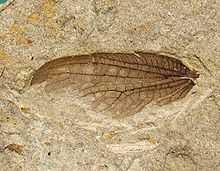
.jpg)
.jpg)
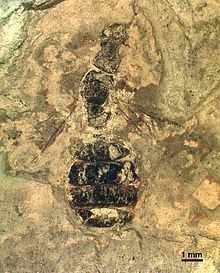
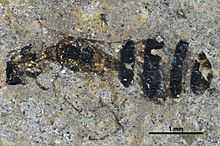
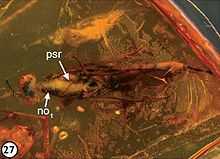
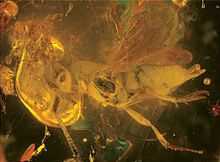
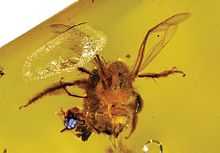
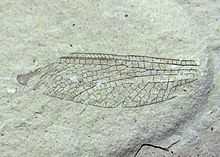
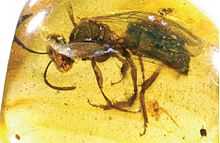
.jpg)